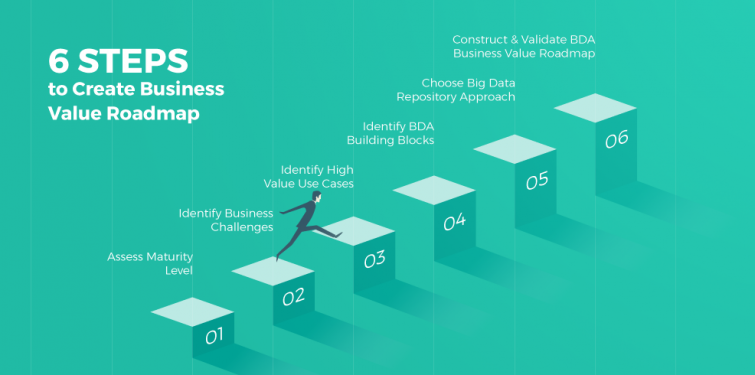Six Steps to Create a Business Value Roadmap – Big Data Analytics in Telecom Industry Organizations
- Published
- 3 min reading

In June 2017, TM Forum released its “Big Data Analytics Guidebook”, explaining the main focus and methods for any company embarking on a Big Data analytics journey. The document also provides main definitions for Big Data analytics, which will simplify communication between companies and suppliers.
The TM Forum Big Data Analytics (BDA) Business Value Roadmap is the industry best practice route to obtaining real business value from Big Data Analytics telecom processes. There are six stages for the implementation of Big Data analytics in telecom industry companies. These are:

Assess Maturity Level
The TM Forum guidebook provides a questionnaire to help you place your organization in the correct position on the BDA maturity level matrix. There are five levels and 11 dimensions in the matrix.
Identify Business Challenges
Examples of objectives for BDA implementation might include making real-time personalized offers, driving network repairs based on customer experience, detecting fraudulent use or predicting customer churn.
Identify High Value Use Cases
Use cases should be listed and prioritized according to business value. Each use case should include name, horizontal and vertical businesses, participants, business drivers, business metrics, customer experience lifecycle stage, customer experience metrics and story.
Identify BDA Building Blocks
Each use case needs clearly described building blocks, including input data, output data, methods of data processing and the appropriate algorithm for analysis and delivery. TM Forum suggests the following building blocks: name, description, type, input data, underlying data, example algorithms, output data, example of use, and related use cases.
Choose Big Data Repository Approach
To ensure that each data entity is prepared correctly in the Big Data Repository, you need to know data availability, expandability, resolution, volume, quality and retention details. Once that’s done, you can define access to data (for example, should this use an ETL process or streaming?). It’s then time to look back at your use cases, and consider questions such as whether ad-hoc reporting is needed, how deep you will need to drill down into data, what you plan to use analysis for, and whether you need advanced visualization capabilities.
By the end of this step, the ABDR entity to be available through Hadoop storage, columnar DB or real-time access (streaming and CEP) should be determined.
Construct & Validate BDA Business Value Roadmap
After putting together all the required technologies and use cases, you can compare your model with the reference model available on TM Forum sites. A good way to validate the model is to revisit the use cases or execute a proof of concept. The final step in telco big data analytics implementation process is to assess your solution after implementation and decide about future development.







